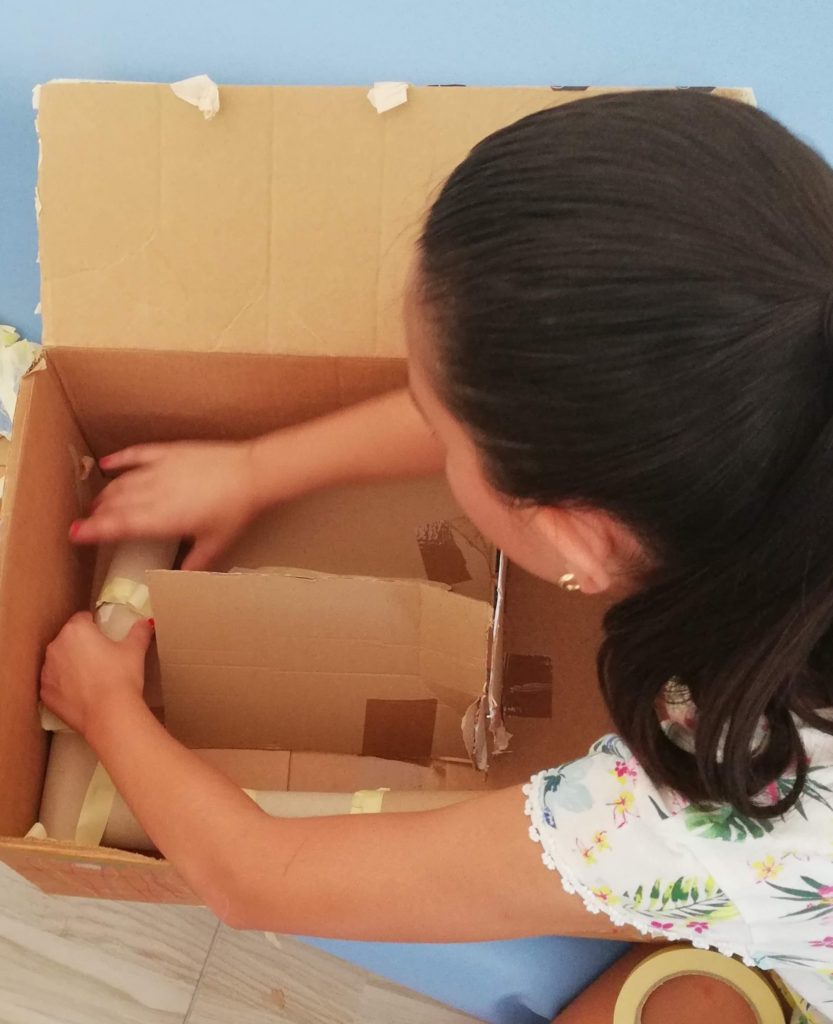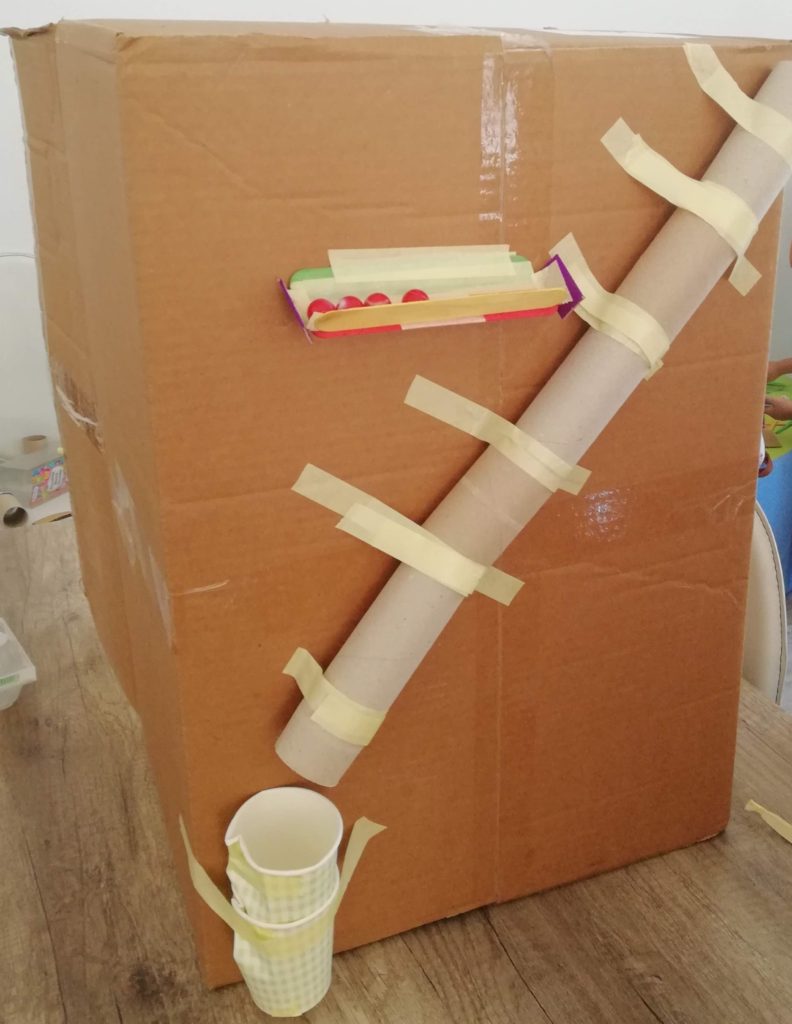Problem-solving | Creativity | Communication | Teamwork
Did you know?
The ‘Chain Reaction’ is a hands-on activity inspired by Rube Goldberg’s cartoons. Rube Goldberg was an American inventor best known for his cartoon inventions, which illustrated how you can complete an extremely simple task using the most complicated way imaginable. He never actually built the inventions he drew…but he inspired people all over the world to follow in his footsteps by building amazing yet excessively complicated chain reactions!
Rube Goldberg Cartoon. Image from: https://www.rubegoldberg.com/the-man-behind-the-machine/
Nowadays kids and adults all over the world are making their own Rube Goldberg inspired chain reactions! Science teachers use chain reaction activities to teach energy concepts, companies use it as a teambuilding exercise, and bands such as OK-Go spend months (yes…months!) designing and building chain reaction in warehouses for their music videos! Amazing!
OK Go – This Too Shall Pass – Rube Goldberg Machine – Official Video
It’s also a great way of getting together as a family to see who can build the longest, most creative and most complicated chain reaction. There’s more than one way of building a chain reaction but the basics always remain the same. One movement needs to trigger the next movement to solve a particular problem at the end. It’s a fun and hands-on way of exploring cause and effect!
Below we’ve included a few steps of how you can carry out this activity at home – but feel free to change the steps in any way you want!
Introduce what a Rube Goldberg machine is & what makes it a chain reaction.
Use the links below to watch videos of people who built some amazing chain reactions and see which video is most suitable for your kids. Observe how each part of the invention is linked to each other and how there is always something moving from one place to another.
Most Rube Goldberg chain reaction are built to solve a problem – usually the machine is built to complete a simple task in the most complicated way imaginable. Feel free to create your own problem to inspire your creation. Below are a few examples which can be used.
Create a chain reaction machine:
To build your chain reaction, you can use any material that you find lying around your home. All chain reactions usually involve the following:
You might decide to build a large-scale creation across a whole room/s, using all the surfaces available such tabletops, chairs and the floor. Example: https://www.youtube.com/watch?time_continue=121&v=OHwDf8njVfo&feature=emb_logo
Another option is to build a small-scale creation. If you have a large carboard box lying around at home, use that as the base. Marbles are great to use as a rolling object. Use pieces of carboard and tape to create ‘slides/ramps’ which will direct your marble ball from the top of the box to the bottom. Add toilet paper rolls, cups or cut bottle in half to change the direction of the marble and to add more steps in your design.
 |
 |
 |
|---|
List of resources which you might have at home:
• Cardboard
• Shoe boxes
• Cable ties
• String
• Cups
• Tape
• Scissors
• Glue
• Rubber bands
• Wood clothes pegs
• Wooden pieces
• Lolly sticks
• Straws
• Toilet paper tubes
• Bottles
• Recycled materials
• Wooden skewers
• Books
• Pieces of pipes – plastic/foam/metal
• Building kits such as Lego, K’NEX, Meccano or anything else you have available at home
• Toys with wheels
• Tennis balls
• Ping-Pong balls
• Toys that move
• Pulleys
• Marbles
• Tinfoil
• Magnets
• Domino blocks
• Weights such as nuts & bolts & washers
And anything else you can think of. You can also use crafts material to decorate your Rube Goldberg Machine.
The beauty of this project is that you can make it as challenging as you want. Here are a few ideas how:
1. STEPS: Decide on the number of steps that your machine needs to have. The more steps you have, the longer and complicated your chain reaction will be. For example, a creation which has 3 steps might involve a marble rolling down a ramp, dropping on a seesaw, which is turn catapults an object to a specific bowl.
2. TIME: Challenge yourself and incorporate ways of how you can slow down moving objects between one step and another to make the chain reaction take longer.
3. MATERIALS: Be creative and think outside the box – how can different objects be used? How many uses does each object have?
4. COLLABORATION: You can either work together as a family to build one machine or else each family member can create their own individual chain reaction. If you choose the latter, encourage teamwork by connecting each individual chain reaction into one Rube Goldberg machine.
Follow the design process to plan how to solve a problem of your choosing. We suggest you constantly test, re-design and re-build to fix any problem or challenge that you encounter along the way.
Explore the science behind your creation: Chain reactions are perfect for exploring energy concepts such as different form of energy, energy transfer and conservation of energy.
We’d love to see your project! Share your creation with us on social media by tagging us on Facebook @esploramalta or on Instagram #esploramalta.